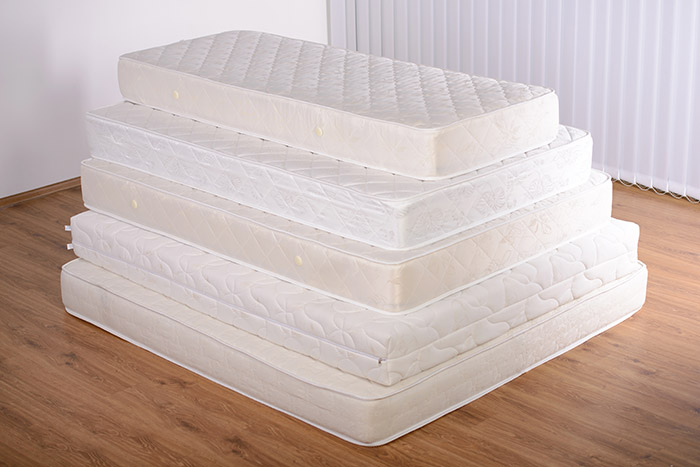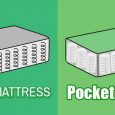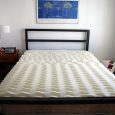Traditionally a mattress is set on top of a box spring with a bed frame or foundation under it. Some people choose to place their mattress on the ground. This could be because they want to save money, keep the sleeper safe, so they don’t roll out of bed or for the design of the room. Sometimes people even chose to sleep directly on the floor on a mat or blanket. Should you put your mattress on the floor? We’ve got a few things to think about before sleeping without a bed frame or foundation.

Mold and Mildew Growth
Humidity goes hand-in-hand with mold and mildew. Places that have humid, wet weather are breeding grounds for all sorts of mold. When a mattress is stuffed right against the ground, the mold and mildew have a great place to grow. It doesn’t get enough ventilation to dry out. This can be very tough on your personal hygiene and your overall health. Many people don’t even know they have mold until it gets out of control with the smell and/or they feel ill. Once a mattress is infested with mildew, it’s time to throw it out.
Dust Particles
They don’t call them dust bunnies for nothing. Dust particles naturally collect on the floor. You can fight dust and dander all day by cleaning, but you can never totally rid of particles. These dust particles often contain contaminated pieces of air. If you have carpet, dust is easily trapped in it. It’s even worse if you have allergies. Dust and allergens naturally live a better life in high-pile carpeting.
Insect Issues
Being closer to the ground is an invitation for insects to join you in bed. It’s a lot easier for them to climb shorter distances. Bed bugs can easily get into mattresses when they’re on the floor. Bed bugs are bad news. Once you have them, it’s tough to get rid of them. If you get infested with bed bugs, that mattress needs to go out the window. If a bug or spider crawls on you in the middle of the night, that’s just something you have to do deal with when you’re so close to the ground.
Risk of Illness
When it’s freezing outside, sleeping on the floor can be a health risk. The cold air gravitates to the floor. This is great in the warmer months so you’re closer to the cooler air. In the colder months, that cold surface forces the cold air into your lungs. This can pose a serious health risk for some people. The cold air could constrict blood flow leading to hypothermia.
Tips for Ventilation
The bottom line is that your mattress needs to breathe so it doesn’t grow bacteria, mold and mildew. If you choose to sleep next to the floor, there are a few things you can do to increase ventilation. Sweep and vacuum frequently to reduce dust particles on the floor. Remember to turn the mattress or lift it regularly allowing air to flow under it. Always keep the floor around the mattress free of food particles and liquid spills so you don’t attract insects. Check the terms of the mattress warranty. Sometimes manufacturers do not permit the mattress on the floor, and they will not honor the warranty if you bring it back for any reason.




